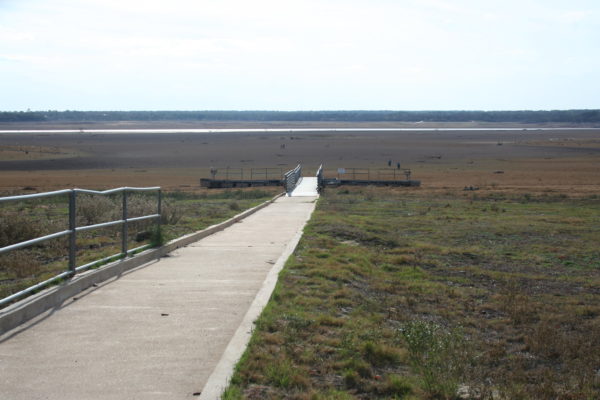AUSTIN, Texas — Texans need to prepare for a near future that is hotter, drier and fraught with more water extremes, according to scientists. But preparation isn’t a one-size-fits-all solution, especially in the face of megadroughts that could be unlike anything the state has seen in the past thousand years.
A recent study led by a research group based at The University of Texas at Austin explores what taking action might look like for different water stakeholders across the state — from farmers and ranchers to municipal water suppliers.
The study was published in the journal Earth’s Future.
Jay Banner, a professor at the UT Jackson School of Geosciences, said that the state is used to grappling with water issues because droughts and floods have been a part of the Texas climate for a long time. But with climate change expected to intensify these extremes — especially drought — Texans need to start making plans for a future that is different from what the state has faced in recorded history.
“We’re in for some major challenges in the 21st century. We’re in for unprecedented drought risk,” said Banner, a professor in the Department of Geological Sciences. “Realizing how many stakeholders that have input and manage water in Texas —which, at the end of the day, is all of us — was the impetus for this study.”
Currently, Texas water planning is centered on sustaining the state in conditions comparable to the worst drought in the state’s instrumental record: a six-year spell in the 1950s. But according to climate model projections, Texas droughts by the end of the 21st century could be much more extreme — comparable to or even exceeding the 10-year megadroughts that plagued the state in its ancient past. Scientists have found evidence for these droughts in a number of natural records, including tree rings and cave formations, which reach back thousands of years.
Adding another challenge to water management in extreme drought is Texas’ growing population and shifting demographics, the researchers said. The state’s population is expected to swell from 29.5 million people to 51 million by 2070 — with the majority residing in urban areas.
The study was conducted by members of the Texas Water Research Network, a water research hub at UT’s Environmental Science Institute, which brings together water experts across universities and research organizations. The lead author is John Nielsen-Gammon, the state climatologist and a Texas A&M University professor. Banner is the director of the institute.
Although these statewide projections are important, water stakeholders need information about their particular situations to take action. The research sets up a framework for bridging that gap in the context of four critical groups: agricultural producers, large surface-water suppliers, small groundwater water districts and regional water planning districts. The paper presents data sources, the questions they can help answer and potential avenues for research that could aid in making more informed planning decisions.
For example, the study cites the need for reliable climate projections on the seasonal level so producers can make decisions about what crops to plant or how large to grow animal herds. It also presents how the Texas drought of 2011 motivated Austin’s municipal water supplier to prepare a 100-year water resources plan, as well as the factors that went into developing that plan.
“All across the state, people have different needs,” Nielsen-Gammon said. “Researchers need to know what to look for, and stakeholders need to know what’s already out there and make use of it.”
Dev Niyogi, the former state climatologist of Indiana and a professor in the Jackson School’s Department of Geological Sciences, who was not involved in the research, said that combining research expertise with stakeholder situations makes for findings with applicability and relevance to Texas as a whole.
“Having this collaborative partnership between UT and the Office of the State Climatologist at Texas A&M provides an avenue for providing the best of ideas and competencies in addressing issues that are very relevant to the state and providing the best science-based framework for utilizing that information going ahead,” he said.
The research was funded by the National Science Foundation, the Cynthia and George Mitchell Foundation, and the UT Austin Planet Texas 2050 Bridging Barriers research initiative, which seeks to apply research on the environmental challenges facing Texas to the world at large.




